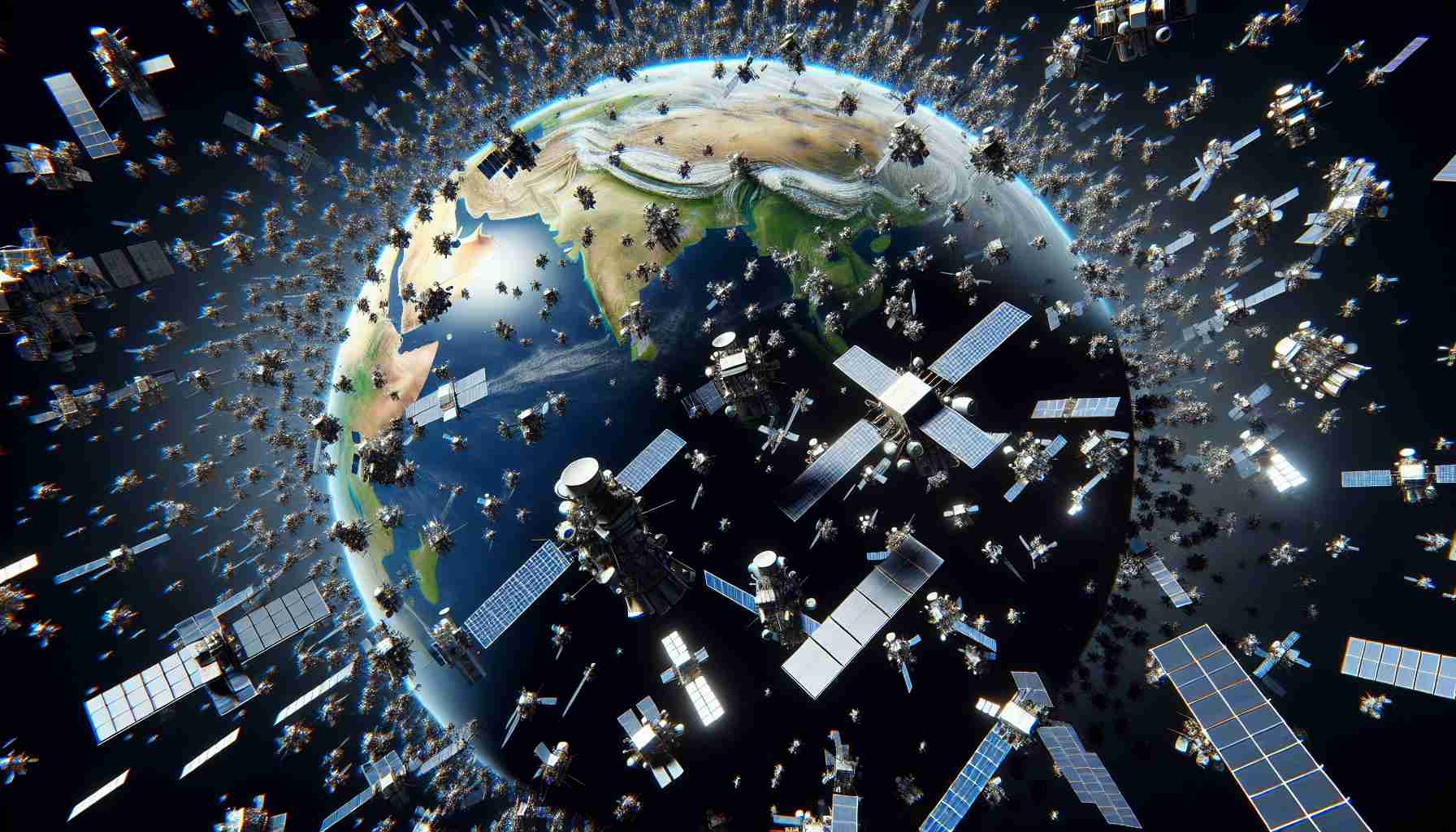
Stargazing on a clear evening can present an unusual sight—a straight line of lights traversing the night sky. This phenomenon, often mistaken for something otherworldly, is actually a glimpse of the thousands of satellites in low Earth orbit, prominently including SpaceX’s Starlink constellation. Despite their technological marvel, these satellites require continual adjustments to avoid collisions, which occur frequently in our crowded orbital environment.
At present, over 13,000 satellites are situated around our planet, with around 10,000 operational. These range from navigating systems to communication devices. With the increasing number of objects in orbit, the risk of collisions is a serious concern. Experts warn that we are approaching a critical moment, highlighting that proactive measures may no longer suffice if ignored for too long.
Past incidents have already demonstrated the gravity of this issue. A notorious case in 2009 involved a collision between two satellites, resulting in a cascade of debris perilously orbiting Earth. The consequences of such crashes are far-reaching, potentially disrupting vital GPS functions and air traffic communications.
Plans to combat these challenges are emerging. Initiatives include ensuring that future satellites can be maneuvered or decommissioned responsibly and exploring strategies to recycle orbital debris. As the number of satellites continues to rise, addressing the urgent need for sustainable practices in space management becomes imperative for safeguarding both our technological infrastructure and astronomical observations.
Growing Concerns Over Satellite Congestion in Earth’s Orbit: An Urgent Call for Sustainable Space Management
As the night sky increasingly fills with artificial lights, a concerning trend emerges—satellite congestion in Earth’s orbit is becoming a pressing issue. With advancements in technology and a surge of interest in satellite deployment, particularly for internet services, the need for a more sustainable space management approach is critical.
Current Situation and Future Projections
Globally, over 50% of the operational satellites belong to private companies, a sharp increase from governmental entities that once dominated this sector. According to industry experts, the number of satellites in orbit is expected to skyrocket to over 100,000 within the next decade if current deployment rates continue. This immense growth poses significant challenges, particularly regarding space traffic management.
Key Questions and Answers
1. What are the primary risks associated with satellite congestion?
The primary risks include potential collisions between satellites and derelict space debris, which can create additional debris and exacerbate the congestion problem. This risk not only threatens ongoing satellite operations but also endangers human spaceflight and activities on the International Space Station (ISS).
2. How does satellite congestion affect Earth-based activities?
Increased congestion can disrupt essential services such as global navigation systems (GPS) and satellite communications, which are vital for everyday activities, including navigation, banking, and emergency services. Moreover, it poses challenges for astronomers, who face light pollution impacting their observations.
Challenges and Controversies
The primary challenge lies in the lack of comprehensive regulations governing satellite launches and end-of-life disposal. Although organizations like the United Nations Office for Outer Space Affairs advocate for guidelines, actual compliance is inconsistent. Additionally, issues arise around who is responsible for managing and mitigating space debris—should it be the launching country, the satellite owner, or a new global regulatory body?
Another controversy revolves around the disparity between commercial and governmental satellite management strategies. As private companies expand their satellite networks rapidly, ensuring they adhere to safety measures while promoting innovation is complex.
Advantages and Disadvantages
Advantages:
– The deployment of numerous satellites can enhance global communication, improve internet accessibility, and deliver critical data for climate monitoring and disaster response.
– Increased private sector involvement has accelerated innovation and development within the aerospace industry.
Disadvantages:
– The rising number of satellites increases the risk of collisions and space debris, making sustainable practices critical for long-term viability.
– Congestion hampers astronomical observations and could negatively affect international agreements and cooperation in space exploration.
Looking Ahead: Strategies for Management
To address the mounting concerns over satellite congestion, stakeholders are advocating for several approaches:
– Development of advanced tracking systems to monitor the position and trajectory of satellites and debris.
– Inclusion of end-of-life plans for satellites, ensuring they are deorbited or moved to less trafficked orbits after their operational lifespan.
– Global collaboration on regulatory frameworks that hold all operators accountable for space traffic management.
As we navigate this new frontier, it is essential to prioritize the long-term sustainability of our orbital environment to safeguard both technological advancements and the scientific pursuits of future generations.
For more information on space sustainability, visit Space.com.



